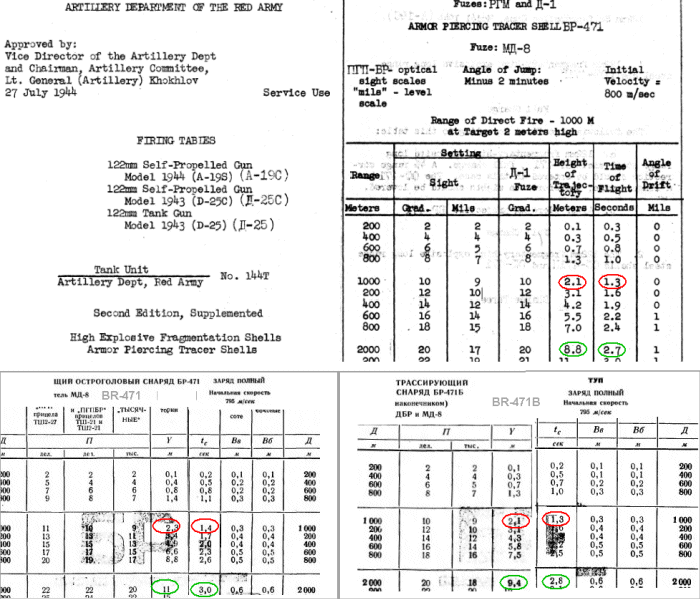|
Ballistic Accuracy Computer vs 122mm |
||


|
I tried to match the official firing tables of the 122mm guns using the BR-471B shell. The first matches the DDR (Deutsche Democratic Republic a.k.a. East Germany) 1960 table for the D-25T tank cannon with a muzzle velocity of 781 m/s. The ballistics of the G7 drag table match better than other drag tables. However, the drag had to be reduced at longer ranges. When a function (noted by K#) that reduces the drag is applied a close match to the official range table can be produced. Note that this is just a small change in the ballistic coefficient but it does make a difference in impact velocity of about 10 m/s at 3000 meters. |
||

|
The second problem was to match the Soviet firing table produced by the D-25 gun. This had a muzzle velocity of 795 m/s. In order to get the D7 drag function to match the table a smaller reduction in the drag has to be applied at a higher rate than the D-25T gun. This alteration is noted by the k/, While the guns muzzle velocities differ by only 14 m/s the change in the drag function is different by a factor of nearly 5.4 times. |
||
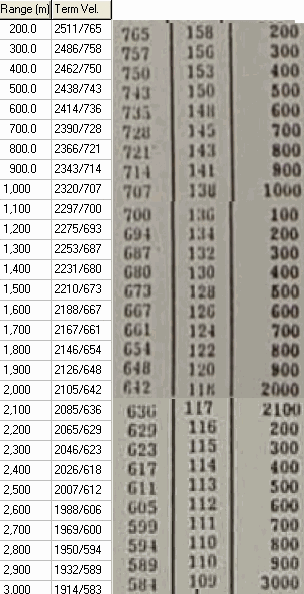
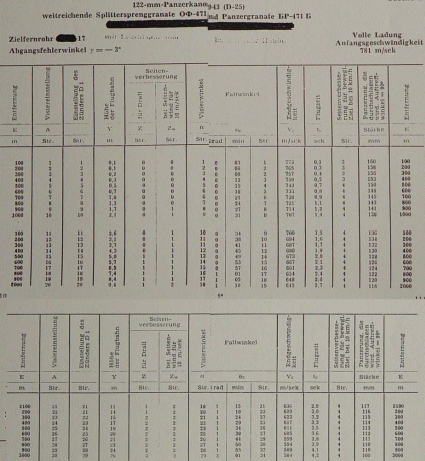
|
DDR firing table for 122mm D-25T APBC BR-471B. |
||
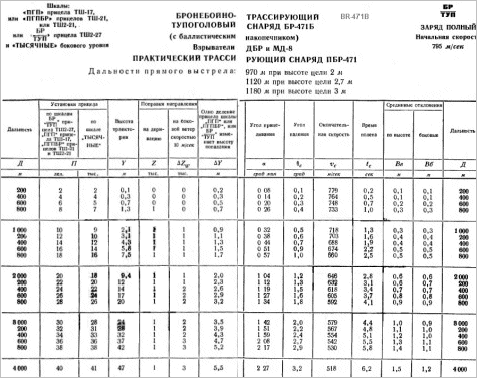
|
Comparing Ballistic Accuracy Program to DDR firing table after drag adjustment. |
||
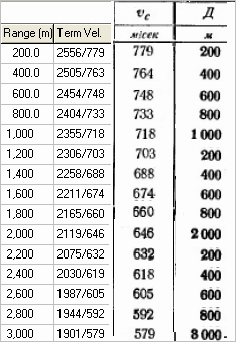
|
Soviet firing table for D-25 APBC BR-471B. |
||
|
Comparing Ballistic Accuracy Program to Soviet firing table after drag adjustment. |
||
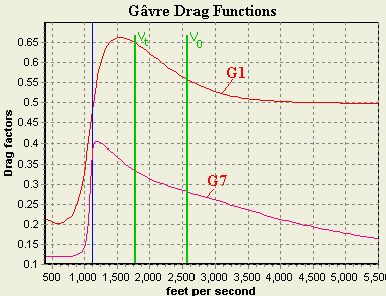
|
Figure to the right: |
||
|
gets complicated. There is a large divergence in curve pattern around 1500 f/s. This is around the range of 6000m. |
||
